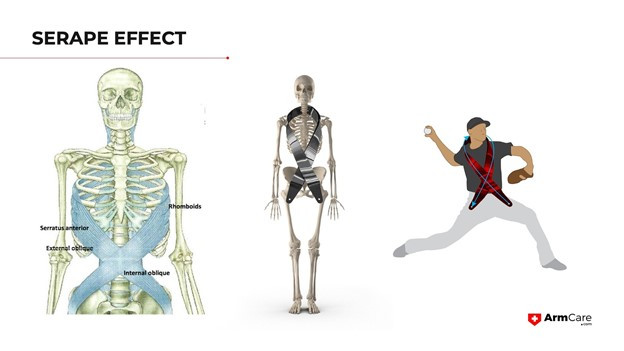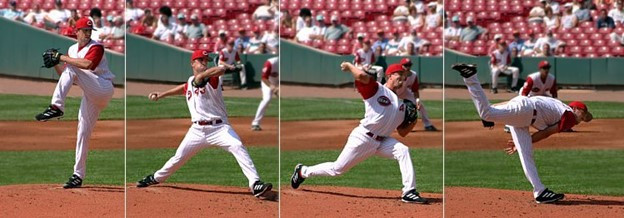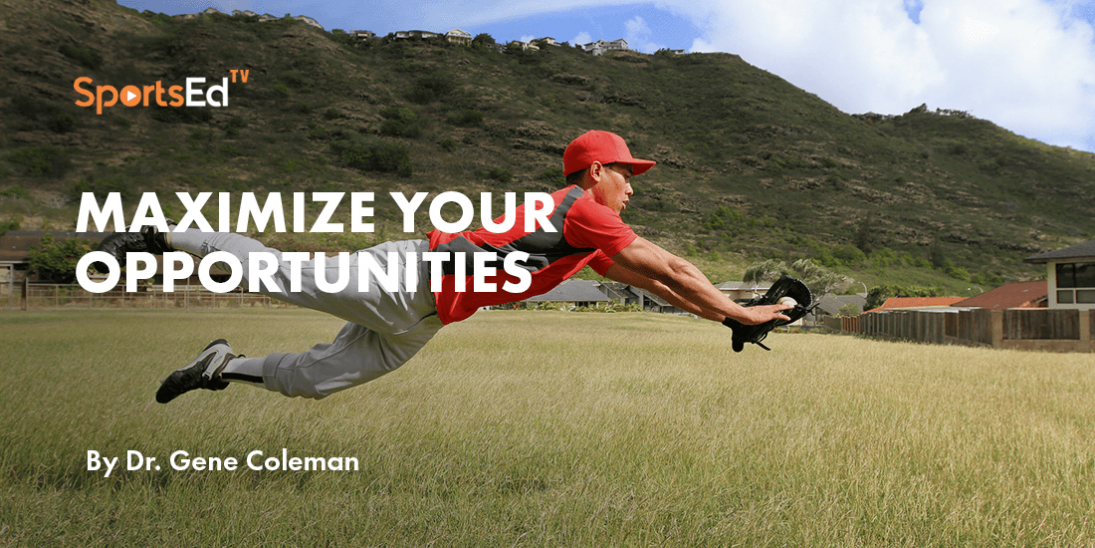Baseball
Welcome and thanks for visiting...

How to Train Better Hip-Shoulder Separation

As we’ve discussed before, good hip-shoulder separation is a crucial component for better pitching, but there’s more to it than just increasing the stretch. In this article, we’ll cover the three important things to help maximize hip-shoulder separation:
(1) Tissue Extensibility
(2) Speed of Stretch
(3) Separation Time.
These key features are reflected by a mental model of a Latin scarf that wraps diagonally around the body, known as a serape. The serape connects the back to the front and the opposite sides from up and down.

Using Your Serape
Our midsection is the ultimate stretch-shortening feature in the body, as the trunk is the heaviest mass, and it creates a slingshot to send it into high speed.
Researchers have shown that 80 percent of velocity comes from the stretch-shortening between the pelvis and trunk.
Not only is the magnitude of the stretch important, but the speed and timing of the stretch matter greatly as well. As the serape gets stretched the goal is to maintain the stretch over greater time so that more energy goes into the throwing arm. By delaying shoulder rotation in relation to the hips, the stretch of “scarf” crisscrossing the body is sustained longer, resulting in increased speed of trunk rotation and delivery.
Serape Effect in Pitching
Now, let’s break down the serape throughout the pitching motion…
- When the athlete is in single support (standing only on the drive leg), there’s an interaction between the drive leg and backside of the contralateral shoulder (glove shoulder), as the lats and obliques are stretched as the pelvis moves behind the trunk. To give more of an illustration, let’s say I am a right-hand pitcher. When I get into peak knee height, my pelvis is counter-rotated so that my left butt cheek is showing toward home plate. In this position, the drive leg is stable, while the glove side becomes stretched from the counter-rotation of the pelvis and ready to initiate a stretch response to generate power.
- Then, as the pelvis unwinds toward the home plate, stability, motor control, and tissue extensibility allow the trunk to hang back and stretch, which gets the rubber band ready for recoil.
- After hitting the peak speed of pelvis rotation, the trunk rotation then hits its peak speed to the point that both the pelvis and trunk singulate, meaning no angles are between them. This timing occurs at the maximal external rotation of the throwing arm and directs the arm on target. Quite an interesting anatomical interaction indeed.

We take a deep dive into serape-focused training in this ACIQ episode if you want to get more information on training your serape for better power from your hip-shoulder separation.





